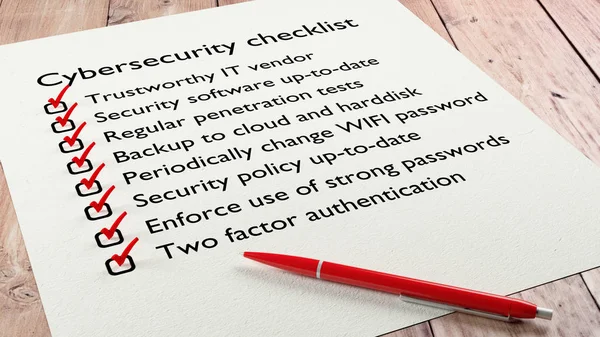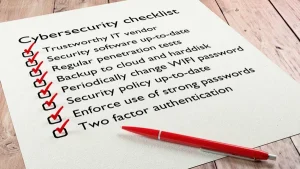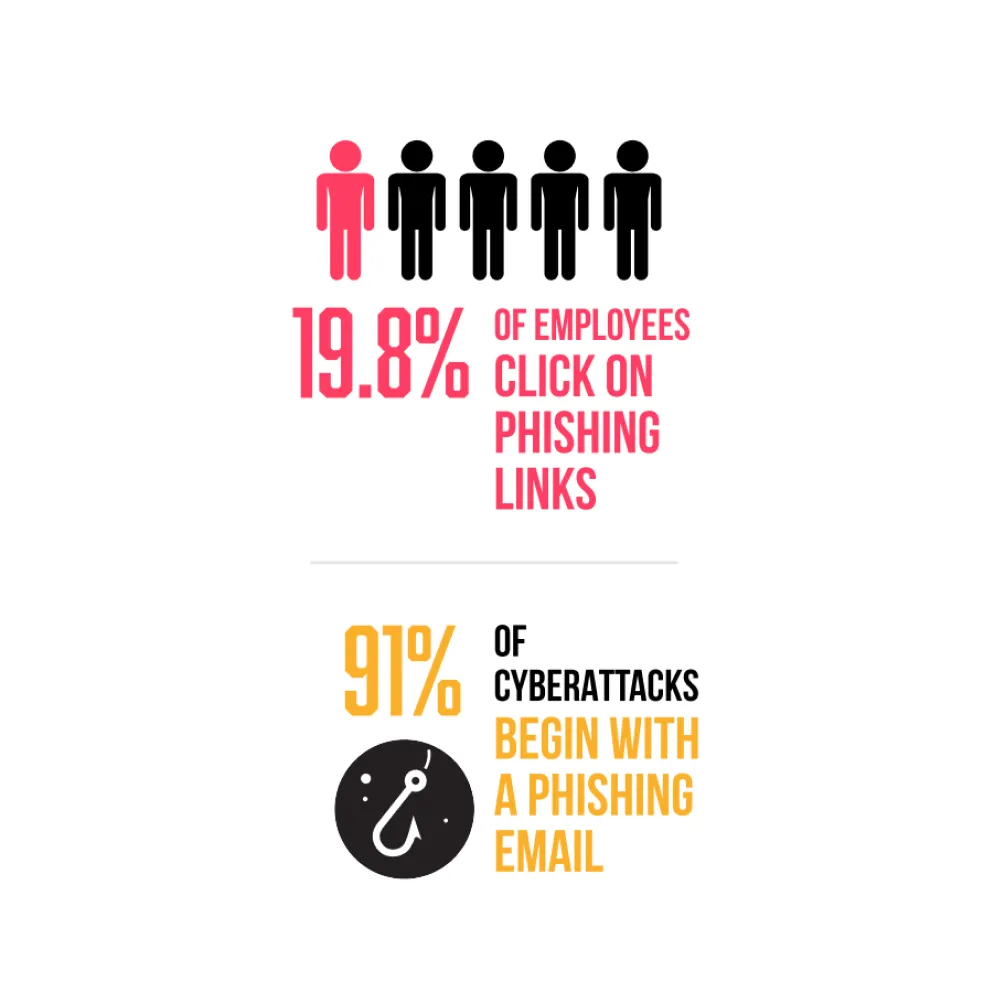In today’s digitally interconnected landscape, cybersecurity is a critical cornerstone for every business, regardless of size or industry. With cyber threats evolving at an unprecedented pace, safeguarding sensitive data and systems has become an imperative.
A small business cybersecurity checklist is a valuable tool to evaluate and document the effectiveness of cybersecurity controls within an organization. It is utilized by IT professionals to fortify the workplace and proactively mitigate potential threats that could disrupt operations. Our Shreveport Managed Services Provider provides reliable cybersecurity strategies to prevent potential threats.
A cybersecurity audit checklist has been expertly developed to provide guidance and facilitate the following vital actions by IT teams:
Complete Cybersecurity Checklist for Business
1. Educate and Train Employees
Educating and training employees on cybersecurity best practices is essential in securing your digital life. By ensuring that all employees know the potential threats and how to mitigate them, you can significantly reduce the risk of a cyberattack or data breach. Start by providing comprehensive training sessions that cover topics such as identifying phishing emails, creating strong passwords, and recognizing potential security vulnerabilities.
It is also important to regularly update this training to reflect new threats and emerging technologies. In addition, establish clear protocols and policies regarding data protection and ensure that all employees understand their role in maintaining the cybersecurity process. By prioritizing employee education and training, you can create a security culture within your organization and better protect your digital assets.
2. Password Management
Effective password management is a major aspect of ensuring the security of your digital life. Creating strong and unique passwords for each account can significantly reduce the risk of unauthorized access. In order to enhance the security of your passwords, it is strongly advised to employ a combination of uppercase and lowercase letters, numbers, and special characters. It is crucial to steer clear of easily guessable information, such as your name or birthdate.
Furthermore, regularly updating your passwords and enabling multi-factor authentication adds an extra layer of security to your accounts. To streamline password management, it is advisable to utilize a well-established password manager tool that securely stores and automatically fills your passwords across various devices and platforms. By implementing these practices, you can better protect yourself against cyber threats and safeguard your valuable personal information online.
3. Implement Access Restrictions
When it comes to cyber security risk assessment checklist, specifying policies and procedures is crucial for protecting your digital life. Establishing clear guidelines for employees and users can help prevent security breaches and ensure everyone understands their role in maintaining a secure environment.
Some key policies and procedures include password management protocols, data encryption standards, and guidelines for handling sensitive information. It is essential to regularly review and update these policies to keep up with emerging threats and technologies. Implement robust policies and procedures to protect your digital assets with the expertise of our IT Consulting Company in Little Rock.
4. Regular Software Updates and Patch Management
Regularly updating your software and managing patches is essential for maintaining the security of your digital life. These updates often include critical security patches that address vulnerabilities and protect against potential cyber threats. To ensure that you have the latest protections, it is important to keep your operating system, applications, and antivirus software up to date.
It is recommended to enable automatic updates whenever possible to ensure that you are always running the most secure software versions. Regularly checking for updates manually can help catch any missed automatic updates. By prioritizing regular software updates and patch management, you can significantly reduce the risk of falling victim to cyberattacks and protect sensitive information.
5. Data Backup and Recovery Plan
In today’s technology-driven world, data loss can have devastating consequences, both personally and professionally. A robust backup system ensures that your important files and information are safely stored in multiple locations, reducing the risk of permanent loss. Several options for backing up your data include cloud storage services, external hard drives, and network-attached storage (NAS) devices.
It is essential to regularly schedule backups and test the restoration process to ensure that your data can be recovered in case of a failure or breach. By implementing a comprehensive data backup and recovery plan, you can safeguard your digital assets and minimize the potential impact of cyber threats.
6. Invest in Cyber Insurance
Cyber insurance provides financial protection during a cyber attack or data breach. It can help cover the costs associated with investigating and mitigating the attack and any legal fees or fines that may be incurred. Cyber insurance can also cover business interruption and loss of income from a cyber attack.
By having cyber insurance in place, you can have peace of mind knowing that you are financially protected against a cyber incident’s potential risks and damages. When considering cyber insurance, it is essential to carefully review the policy terms and coverage limits to ensure that they align with your specific needs and risk profile.
7. Conduct Regular Security Audits
Conducting regular security audits is one of the essential cybersecurity steps in ensuring the safety and integrity of your digital life. By regularly reviewing and assessing your cybersecurity measures, you can identify any potential vulnerabilities or weaknesses in your systems and take appropriate action to address them.
This may include updating software and firmware, implementing stronger passwords and authentication methods, and educating yourself and your team on best practices for online security. Regular security audits help protect your personal information and safeguard sensitive data from potential cyber threats. Conduct these audits consistently to maintain a strong defense against digital attacks.
In Conclusion
Safeguarding your business against cyber threats is a complex endeavor that requires continuous vigilance and proactive measures. A comprehensive cybersecurity assessment checklist is a vital shield, fortifying your digital infrastructure, sensitive data, and overall operations. Businesses can significantly reduce vulnerabilities and mitigate potential risks by prioritizing robust security protocols, employee training, and leveraging advanced technologies. It is important to follow a cybersecurity checklist that leads to the longevity and trustworthiness of your business in the digital landscape.



